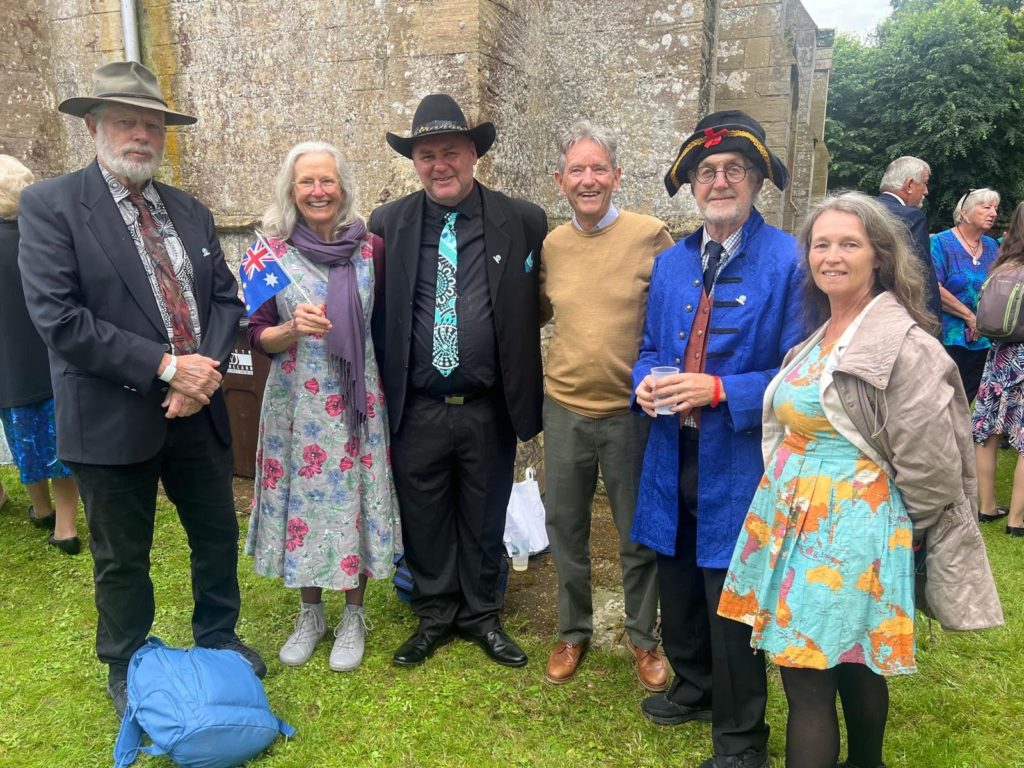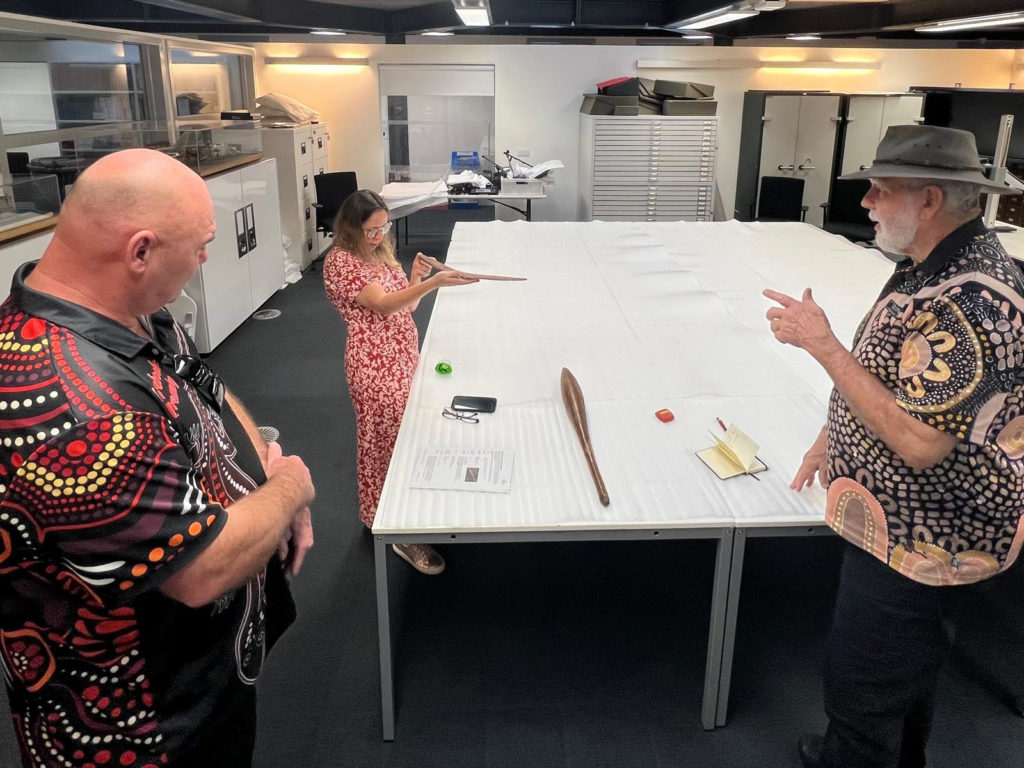The renowned explorer who named local man Bungaree ‘The First Australian’ was reburied in his birth village over the weekend.
In a poignant ceremony last Saturday, July 12, the remains of Captain Matthew Flinders, the explorer who famously circumnavigated Australia with local Aboriginal man Bungaree, was re-interred in his birthplace of Donington, Lincolnshire.
The village, located about 185km north of London, saw thousands lining its streets to honour the explorer.
Among the attendees were descendants of Bugaree Shad Tyler from the Central Coast and Uncle Laurie Bimson.
The remains of Flinders, lost in the mid-1800s and rediscovered in 2019 during the HS2 high-speed rail excavations in London, were laid to rest in an event marked by deep emotions and historical reverence.
Royal Navy sailors and officers marched through Donington, accompanying the coffin to the local church, where the ceremony took place.
Tyler and Bimson travelled to London after being invited to attend the ceremony as representatives of the descendants of Bungaree, who became a close friend and confidant of the English explorer.
It was not lost on the local descendants of Bungaree that he and Flinders were great mates, the two men having travelled for years together on the voyages that circumnavigated Australia.
Flinders’ appreciation for Bungaree’s navigational assistance and diplomatic work with other Aboriginal tribes was so great he noted in his diaries he considered Bungaree ‘The First Australian’.

Several descendants of Flinders attended the ceremony and were reportedly deeply touched by the way their forebear was now being rediscovered and seen in a new light.
Other Australian dignitaries attending the ceremony included the Governor of South Australia, Frances Adamson.
She reflected on the significance of Flinders’ contributions to global navigation and the sense of homecoming his reburial represented.
“This service of thanksgiving and dedication took place 210 years after Matthew Flinders died and was originally buried,” Adamson said, emphasising the lasting impact of his work on modern Australia.
“His views were persuasive in moving the name from Terra Australis to Australia.”
Adamson also highlighted Flinders’ resilience and mapping skills, noting how his achievements continue to inspire.
She expressed hope that his legacy would gain wider recognition in both the United Kingdom and Australia.
Their presence at the reburial marked a gesture of respect and recognition of the deep ties between Flinders and the Indigenous people of Australia.
The historical significance of the event on the descendants of Bungaree is important for reconciliation across Australia as the notable Aboriginal leader was so close to Flinders,.
Prominent Bungaree descendant Tracey Howie was not able to attend the ceremony herself but met with Tyler and Bimson before they left for England.
“Bungaree was a very important figure in that time; his work with Flinders is a testament to his importance,” she told CCN.
Flinders University Chancellor John Hood described the elaborate preparations by Donington’s residents, which included a full military and gun salute, with Australian and British flags adorning local gardens and businesses.
“It’s taken until now for the good people of Donington to organise to bring him home to be buried close to his family,” Hood said, noting the symbolic recreation of Flinders’ original coffin.
Captain Flinders was just 40 years old when he died in 1814.
His grave, lost around 1852, was finally identified by a lead breastplate bearing his name and dates of birth and death.
This breastplate will return to South Australia and likely be displayed permanently at the Maritime Museum.
Fiona Salmon, a descendant of Flinders and director of Flinders University’s Art Museum, has facilitated the donation of personal items, including Flinders’ compass and jacket buttons, to the university.
An exhibition featuring these artifacts, along with letters, a coral necklace given to his wife and other personal effects, is planned.
Hood expressed hopes that the university would secure the breastplate and other artifacts on loan intermittently, ensuring the continued celebration and study of Flinders’ legacy.
Tyler and Bimson also visited a museum associated with Oxford University to view one of Bungaree’s clubs in its collection.

They now hope to negotiate the return of that club back to Australia.
Coast Community News made a contribution toward the locals’ travel costs to England.
David Abrahams



I was there at the moving re-interment of the remains of Captain Matthew Flinders, RN, in Donington Church. It was so good to see two of Bungaree’s descendants there. It’s difficult to imagine how Flinders could have mapped Australia without Bungaree’s guidance and local knowledge. He must also have been a translator for Flinders and his crew. I was glad to see that Bungaree was mentioned several times in the service, and it was clear that he and Flinders were friends and colleagues in the task at hand. Far from this being a so-called ‘colonial’ effort, this was a collaboration between people originating from different continents engaged in the pursuit of knowledge.